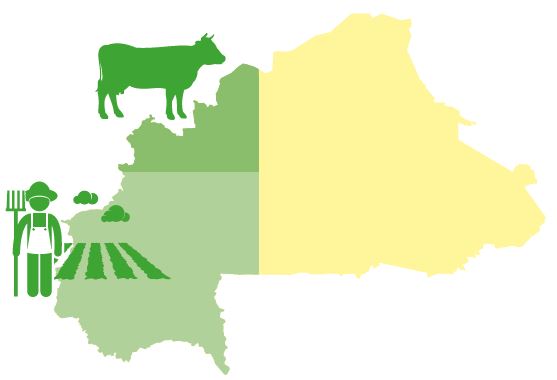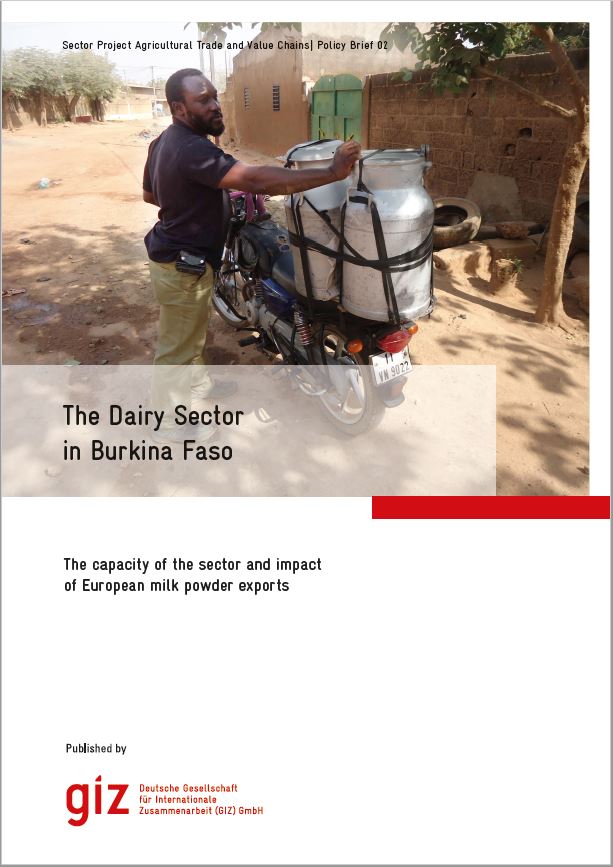The Dairy Sector in Burkina Faso
Policy brief on the capacity of the West African country’s dairy sector and the impact of European milk powder exports
In the last decades, European milk powder exports to developing countries have increased. Therefore, many civil society organizations are concerned about possible adverse consequences for local production systems, using Burkina Faso as a showcase for an allegedly negative impact of European agricultural exports in general.

Agriculture makes up 40% of Burkina Faso’s GDP,
livestock accounts for 15% of agriculture
Main results study of the Burkinabe dairy sector in 2017
- The country’s dairy sector has a long-term potential for growth. However, for the potential to be realised, it will be essential to create conducive framework
conditions. Climate change, urbanization and changes in land use as well as the practice of nomadic livestock husbandry pose great challenges to the expansion of the dairy production in the country. - Currently, Burkinabe dairy farms are not capable of meeting the rising domestic demand for milk.
- At this point, there is no sign of imported milk powder directly competing with locally produced milk. Imported milk powder is primarily used for supplying urban populations.
- Imported milk powder is a vital production factor for many of the mini-dairies.
About the policy brief series
The policy briefs of this series summarize the results of working papers that are relevant to specialist audiences—compiled by the Sector Project Agricultural Trade and Value Chains on behalf of BMZ.


